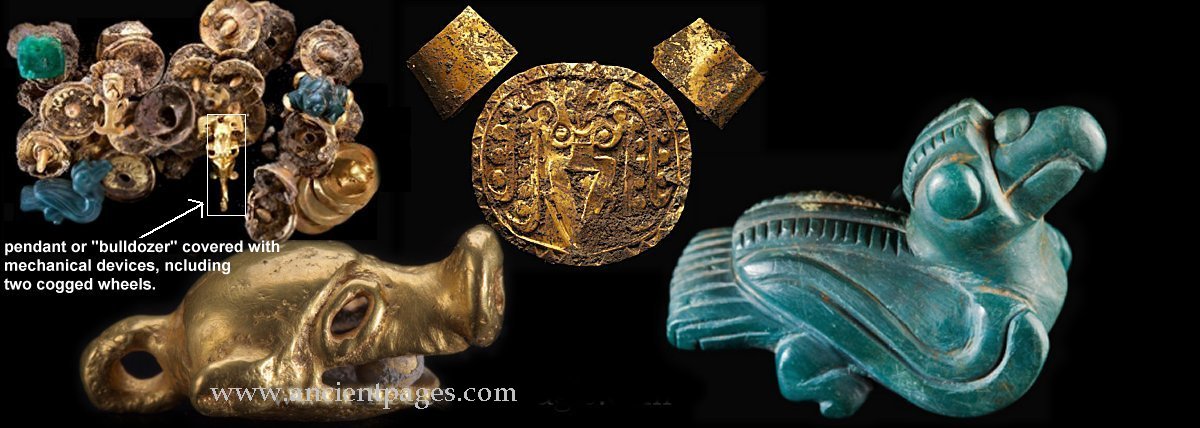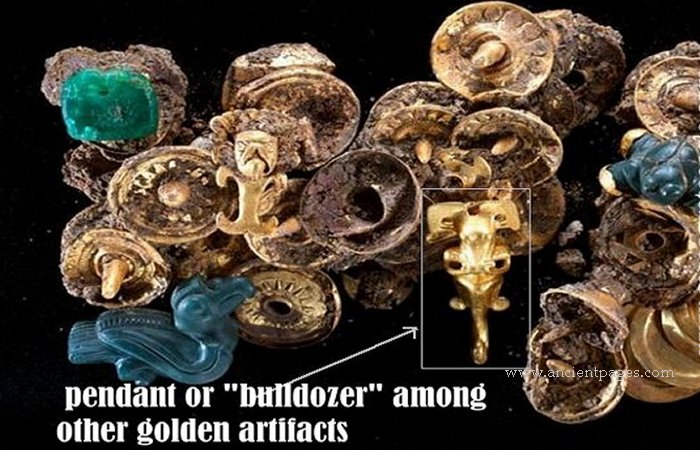Mysterious Golden Lords Of Panama
A. Sutherland - AncientPages.com- Our fascination with golden objects dates back to ancient times but gold has often very dark and gruesome history accompanied with lost life of innocent people.
Not long ago, numerous artifacts of gold and precious stones, indicating the existence of a previously unknown civilization, were discovered in the town of El Caño in Panama.
This amazing find is considered one of the most significant discoveries of the last century and similar to that of the Sitio Conte site, also in central Panama, located only two miles (three kilometers) from Sitio Conte.
The discovery proves the golden-chiefs culture, which can be traced from about A.D. 250 to the 16th century, when Spanish conquerors arrived on the scene.
According to early Spanish accounts, only paramount chiefs had the right to wear certain types of gold ornaments, such as the breastplate.
These people had supernatural power as well as political authority.
Early Spanish sources indicate that gold plaques and other gold adornments were worn to war and to the grave.
According to researchers, El Caño people are "best regarded as a separate and distinct (though unnamed) culture that flourished in central Panama.
However, in ancient tombs hidden in the jungle of Panama there is much more than only gold.
This archaeological site, El Caño, contains three pre-Columbian mounds that date back between AD 500 and 1200. The larger of the two mounds revealed five skeletons in the same position as when they were unearthed at 4m below the surface.
One is believed to be the grave of a chieftain, as it contained a number of gold and emerald objects. A small museum displaying pieces of pottery, arrowheads, and carved stones found at the site was under renovation at the time of research.
Also here are rows of stone pedestals, which are the remains of the so-called Temple of a Thousand Idols, removed by an American adventurer in the 1920s and sent to a museum in New York.
A few years ago, archaeologist Julia Mayo of the Smithsonian Tropical Research Institute began to re- investigate the area covered by ancient stone monoliths and mysterious sculptures, and popular among treasure hunters especially in the early 20th century.
During excavations in early 2011, archaeologists discovered the burial of a senior man. The grave had several levels and was closed with a wooden roof. Together with this man were also buried another 25 people whose bodies were stacked neatly.
Researchers found children's golden outfit, perhaps intended for the son of the ruler, small gold plates, bracelets, earrings and a necklace of semiprecious stones. At the bottom of the grave, scientists have found the remains of 15 people whose bodies serve as a base.
These people could be the captured soldiers or slaves who were sacrificed or committed suicide. As reported by archaeologists, in the vicinity of the bodies, there was found a vessel filled poisonous fish bones Guentheridia Formosa. Additional interesting detail were the remains of people covered with" ceramic plates, the purpose of which is not entirely clear," reported National Geographic.
There is an ancient myth found among the Chibcha, also called Muisca, and their modern descendants, the Cueva Indians, in the eastern part of Panama. According to the myth, the Chibcha had extraordinary skills that are unknown today. It also had extraordinary powers of working gold forming it to gold helmets, beautiful filigree gold chains and other precious ornaments representing men with animal heads, bats, frogs, spiders and eagles.
These artifacts remain a fascinating legacy of the Cueva Indians.
Updated on March 4, 2024
Written by – A. Sutherland AncientPages.com Staff Writer
Copyright © AncientPages.com All rights reserved. This material may not be published, broadcast, rewritten or redistributed in whole or part without the express written permission of AncientPages.com
Expand for referencesReferences:
McCarthy C., Fallon S. Lonely Planet Panama
[/expand]More From Ancient Pages
-
 3,000-Year-Old Geoglyphs May Depict The Heavens
Archaeology | Jun 25, 2018
3,000-Year-Old Geoglyphs May Depict The Heavens
Archaeology | Jun 25, 2018 -
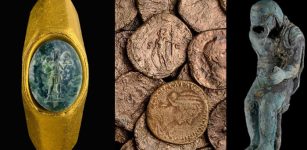 Magnificent Underwater Treasure Recovered From Two Ancient Shipwrecks Off The Coast Of Caesarea
Archaeology | Dec 28, 2021
Magnificent Underwater Treasure Recovered From Two Ancient Shipwrecks Off The Coast Of Caesarea
Archaeology | Dec 28, 2021 -
 Biblical Prophet Jeremiah Whose Prophecies Disappointed People
Biblical Mysteries | Jan 30, 2019
Biblical Prophet Jeremiah Whose Prophecies Disappointed People
Biblical Mysteries | Jan 30, 2019 -
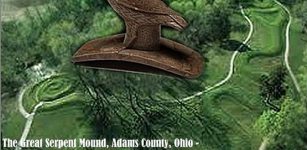 Great Serpent Mound Of Ohio: Most Famous Ancient Earthwork Of North America
Civilizations | Mar 17, 2014
Great Serpent Mound Of Ohio: Most Famous Ancient Earthwork Of North America
Civilizations | Mar 17, 2014 -
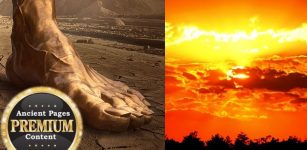 Ancient Giants In Ecuador Were Killed By Fire From The Sky – Indian Legends Reveal
Ancient Mysteries | Dec 12, 2017
Ancient Giants In Ecuador Were Killed By Fire From The Sky – Indian Legends Reveal
Ancient Mysteries | Dec 12, 2017 -
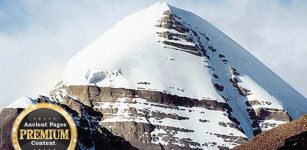 Mysterious Mount Kailash: Secrets Of The Man-Made Pyramid And Entrance To The City Of The Gods
Ancient Mysteries | Oct 27, 2014
Mysterious Mount Kailash: Secrets Of The Man-Made Pyramid And Entrance To The City Of The Gods
Ancient Mysteries | Oct 27, 2014 -
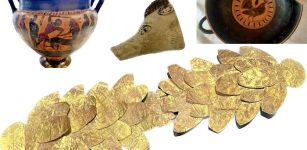 15 Precious Ancient Objects Returned To Greece From Switzerland – Antique Dealer Charged With Trafficking
Artifacts | Feb 3, 2023
15 Precious Ancient Objects Returned To Greece From Switzerland – Antique Dealer Charged With Trafficking
Artifacts | Feb 3, 2023 -
 Evidence Of Ritualistic Gatherings 35,000 Years Ago Found In The Manot Cave In Galilee, Israel
Archaeology | Dec 12, 2024
Evidence Of Ritualistic Gatherings 35,000 Years Ago Found In The Manot Cave In Galilee, Israel
Archaeology | Dec 12, 2024 -
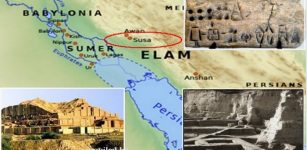 Riddle Of Two Undeciphered Elamite Scripts
Featured Stories | May 19, 2021
Riddle Of Two Undeciphered Elamite Scripts
Featured Stories | May 19, 2021 -
 Unique Flagship ‘Gribshunden’: Spectacular Discoveries
Archaeology | Oct 2, 2019
Unique Flagship ‘Gribshunden’: Spectacular Discoveries
Archaeology | Oct 2, 2019 -
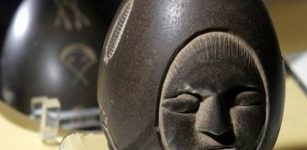 America’s Ancient “Mystery Stone” Remains An Unexplained Puzzle
Artifacts | Apr 17, 2014
America’s Ancient “Mystery Stone” Remains An Unexplained Puzzle
Artifacts | Apr 17, 2014 -
 Unraveling The Mystery Of The Phoenix Bird – Symbol Of The Sun And Eternal Rebirth Of Life
Egyptian Mythology | Nov 6, 2023
Unraveling The Mystery Of The Phoenix Bird – Symbol Of The Sun And Eternal Rebirth Of Life
Egyptian Mythology | Nov 6, 2023 -
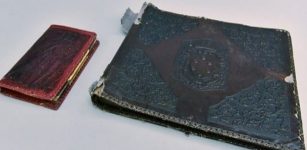 Nazi Photo Album Made Of Human Skin Found At Polish Antiques Market
History | Mar 18, 2020
Nazi Photo Album Made Of Human Skin Found At Polish Antiques Market
History | Mar 18, 2020 -
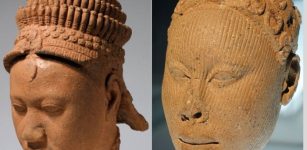 Ife Head: Significance Of The Head ‘Ori’ In Yoruba Ancient And Present Beliefs
Artifacts | Mar 27, 2019
Ife Head: Significance Of The Head ‘Ori’ In Yoruba Ancient And Present Beliefs
Artifacts | Mar 27, 2019 -
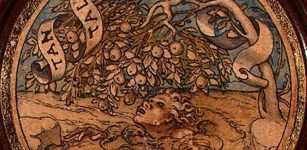 Tantalus – Greek King And Evildoer Who Violated Divine Laws And Was Sent To Tartarus
Featured Stories | Mar 1, 2019
Tantalus – Greek King And Evildoer Who Violated Divine Laws And Was Sent To Tartarus
Featured Stories | Mar 1, 2019 -
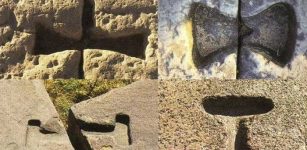 Mystery Of Ancient Metal Clamps – Advanced Lost Technology Modern Science Still Cannot Explain
Ancient Technology | Jul 31, 2020
Mystery Of Ancient Metal Clamps – Advanced Lost Technology Modern Science Still Cannot Explain
Ancient Technology | Jul 31, 2020 -
 Chilling Story Of Glamr Who Became A Draugr, A Living Dead – Scary Yule Haunting
Norse Mythology | Dec 29, 2024
Chilling Story Of Glamr Who Became A Draugr, A Living Dead – Scary Yule Haunting
Norse Mythology | Dec 29, 2024 -
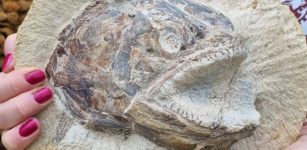 183-Million-Year-Old Fossils: Jurassic Marine World In A Farmer’s Field
Fossils | Jul 31, 2022
183-Million-Year-Old Fossils: Jurassic Marine World In A Farmer’s Field
Fossils | Jul 31, 2022 -
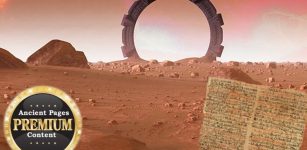 Forbidden Knowledge: Secret Ancient Gates Of The Shining Ones – Geomantic Energy Vortices – Part 2
Ancient Mysteries | Jul 16, 2019
Forbidden Knowledge: Secret Ancient Gates Of The Shining Ones – Geomantic Energy Vortices – Part 2
Ancient Mysteries | Jul 16, 2019 -
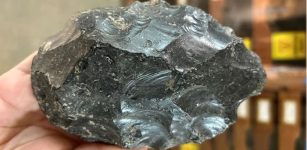 1.2-Million-Year-Old Obsidian Axe Made By Unknown Human Species Discovered In Ethiopia
Archaeology | Jan 25, 2023
1.2-Million-Year-Old Obsidian Axe Made By Unknown Human Species Discovered In Ethiopia
Archaeology | Jan 25, 2023


